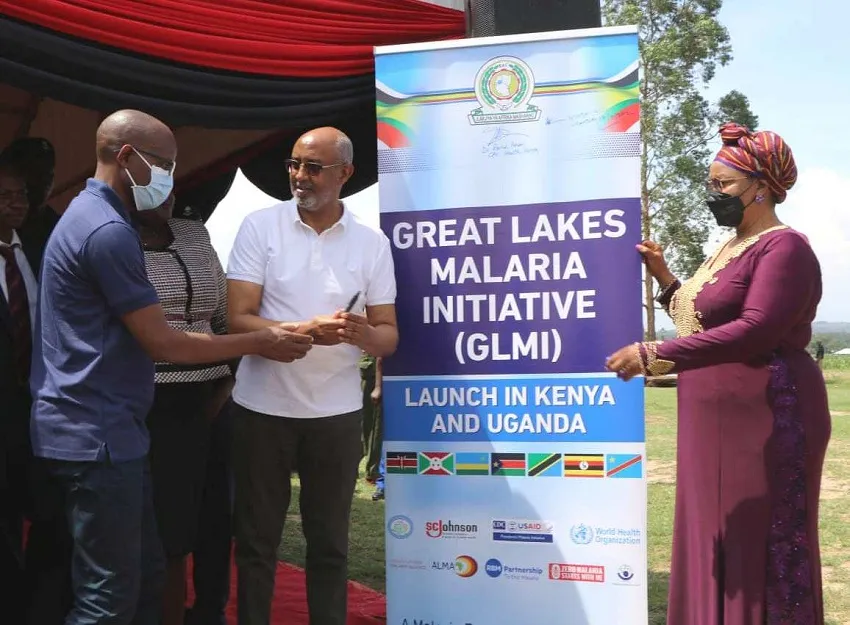Fighting Malaria at Community and Household Level
Monday, 10 April, 2017

Milka Akinyi wakes up nauseous, feverish and too weak to walk to the nearest hospital, which is five kilometres away. She sends for Alice Aoko, the Community Health Worker (CHW) in her area.
Milka’s symptoms are similar to those of malaria. To confirm or rule this out, Alice performs a test using the Rapid Diagnostic Test Kit (RDT). She pricks Milka’s middle finger, draws blood and places it on a strip. The reading is positive for malaria and Alice administers Arthemeter Lumefantrine (AL), the malarial drug recommended by Kenya’s Ministry of Health.
According to the National Malaria Indicator Survey 2010, malaria is the leading cause of morbidity and mortality in Kenya. To increase effectiveness of malaria control activities in the country, the Ministry of Health, Amref Health Africa and other development partners recently introduced Community Case Management of Malaria (CCMM) which is being piloted in Nyanza and Western regions of the country.
CHWs are an integral part of Kenya’s health care delivery system, enhancing community access to health care by providing services at household and community levels. The CHWs carrying out CCMM are selected by the local administration based on a set criteria and trained by the Ministry of Health in close collaboration with Community-Based Organisations with support from Global Fund for Malaria Round 10 grant administered by Amref Health Africa. They are trained to identify signs and symptoms of malaria and administer a basic malaria test using the Rapid Diagnostic Test kit. Complicated cases are referred to the health centres.
The programme has not been without challenges. Some community members do not trust the CHWs’ ability to accurately test and treat them for malaria since they view them as their neighbours and friends and not health workers. At the same time, the CHWs sometimes face hostility from health workers when they go to collect drugs at the health facilities, as some of the health workers are unhappy about the increased responsibilities given to the CHWs.
Global Fund Malaria Project Manager Jared Oule says that Amref Health Africa is organising community campaigns and dialogue to address misconceptions and to clarify the roles of the CHWs.
So far, 720 CHWs have been trained in community case management of malaria and it is hoped that they will help to reduce the 90,000 cases of malaria experienced annually in Nyanza and Western regions. The programme has already successfully been rolled out in Malindi and Lamu Counties in the Coast Region where, according to the Malaria Journal 2012, prompt access to timely and effective treatment was 5.7 times higher when CHWs were the source of care. It is envisaged that Nyanza and Western regions will benefit in a similar manner from the programme.
Already, benefits of the programme are being felt in Sitabicha and Tamulega community units in Western Region. Mrs Philomena Sande, who is in charge of Tamulega Dispensary, supervises CHWs and provides them with the testing kits, medicines and reporting tools.
“Since the two community units rolled out home malaria management in June 2013, I have noted that there has been a reduction in the workload at the facility,”
says Sande.
“More community members are also coming to the facility to seek treatment,”
she adds.
“With regular supply of RDTs, home malaria management will help reduce malaria cases at the community level,”
she says.
“Looking at malaria trends in Tamulega dispensary, we see that before the rolling out of the Community Case Management of Malaria programme in 2012, the malaria cases were high, with nearly 1,000 patients treated. After the introduction of the programme in 2013, the cases reduced to 400 patients. This shows that Community Case Management of Malaria has been a great success in this area.”







